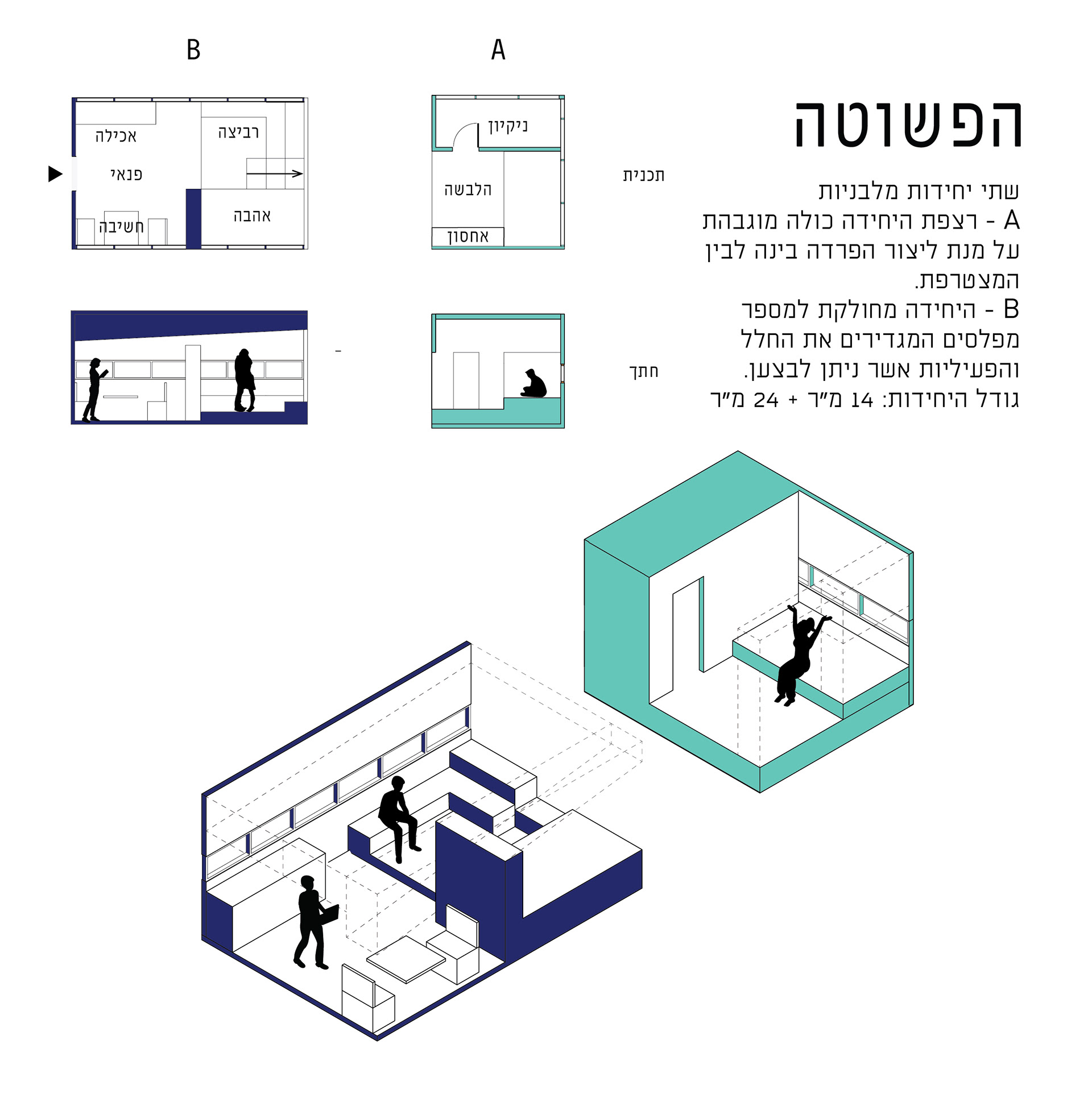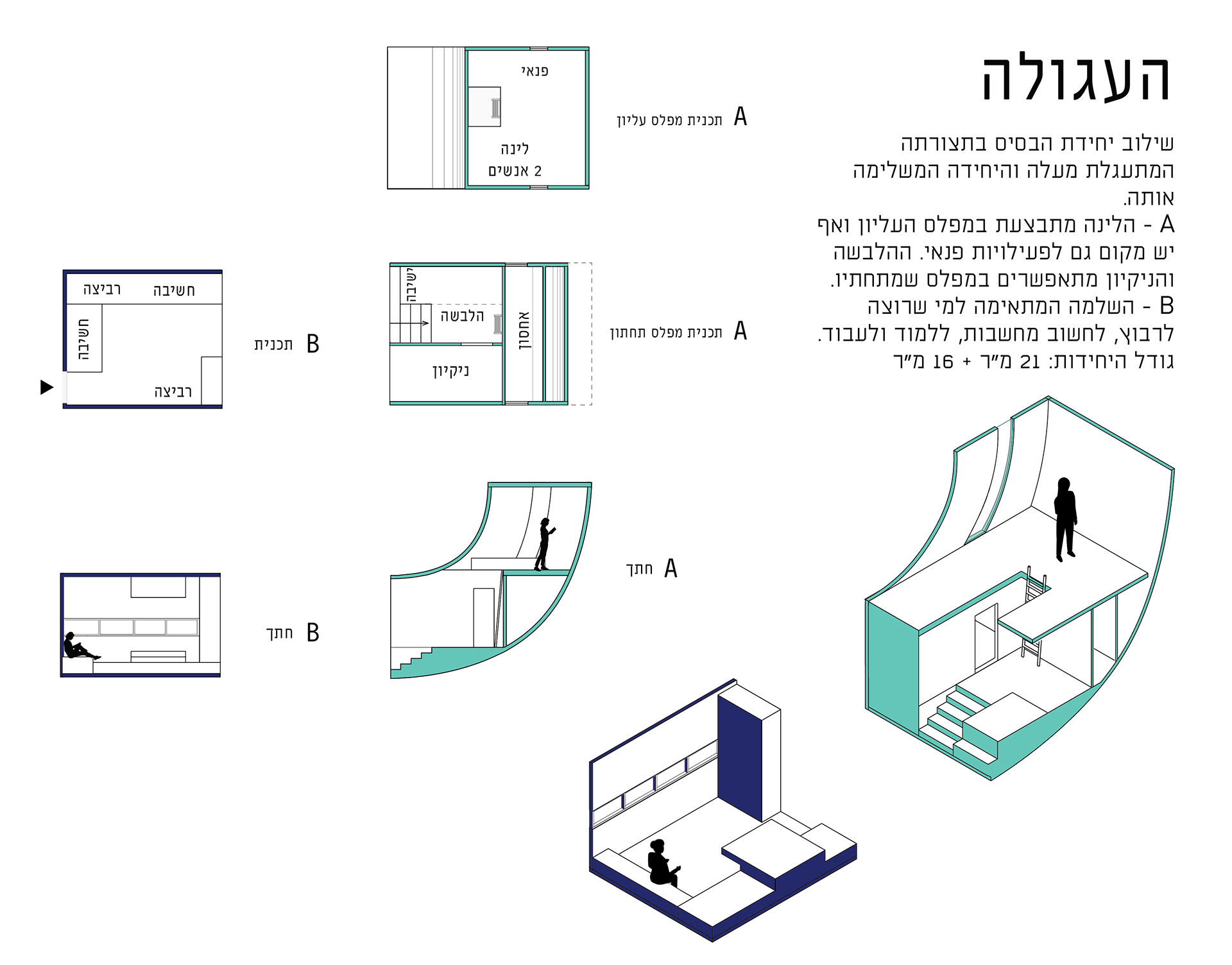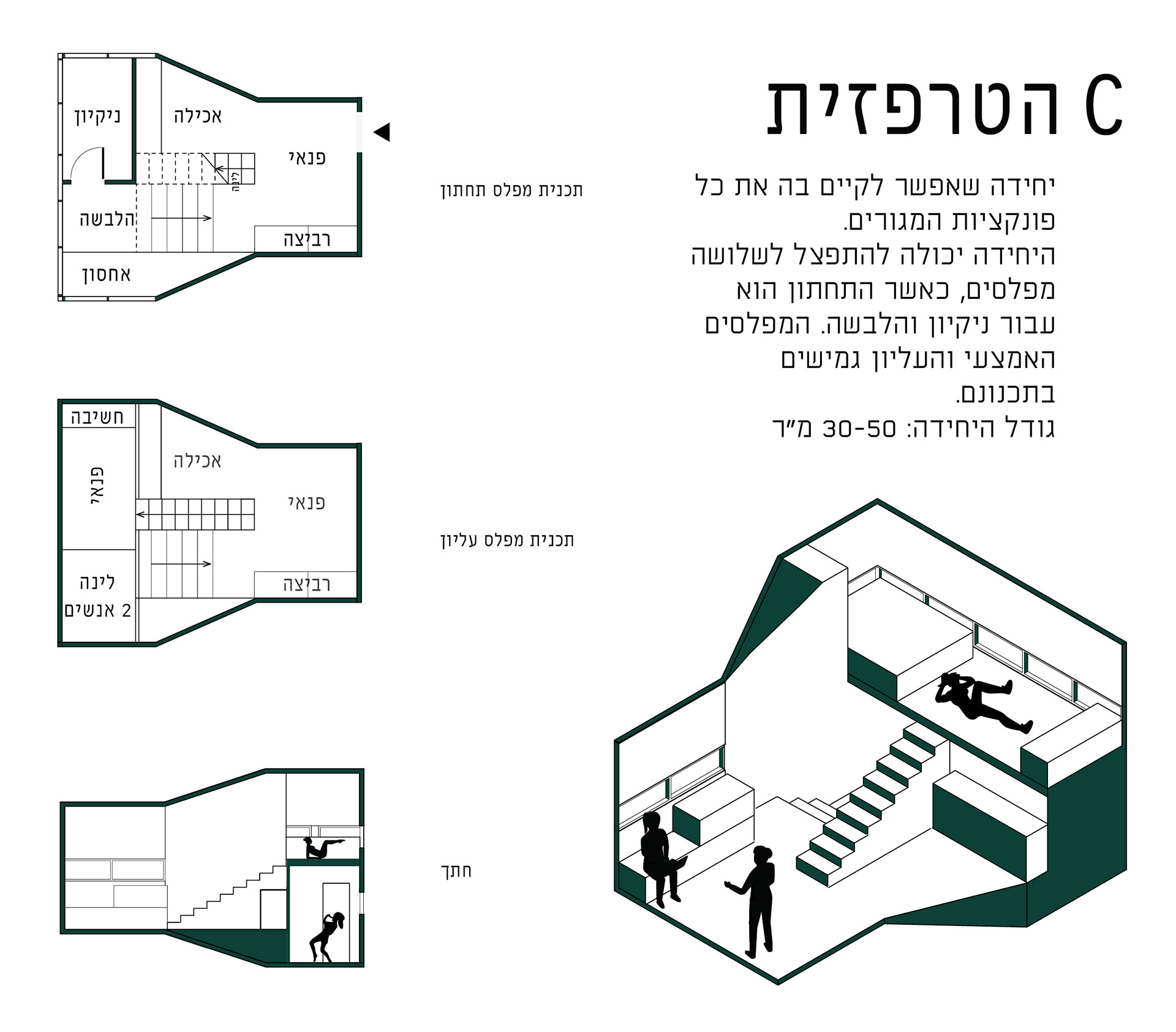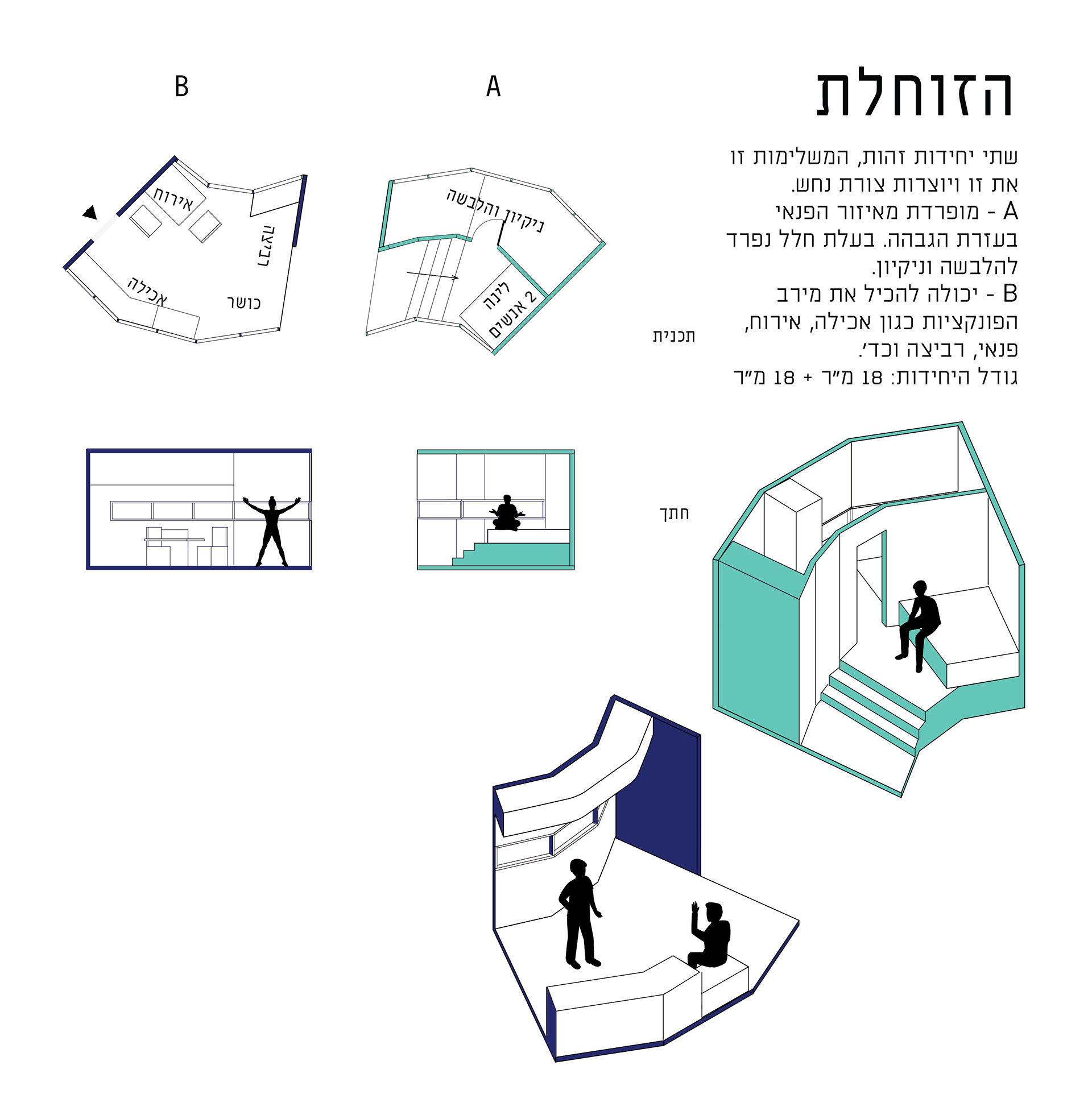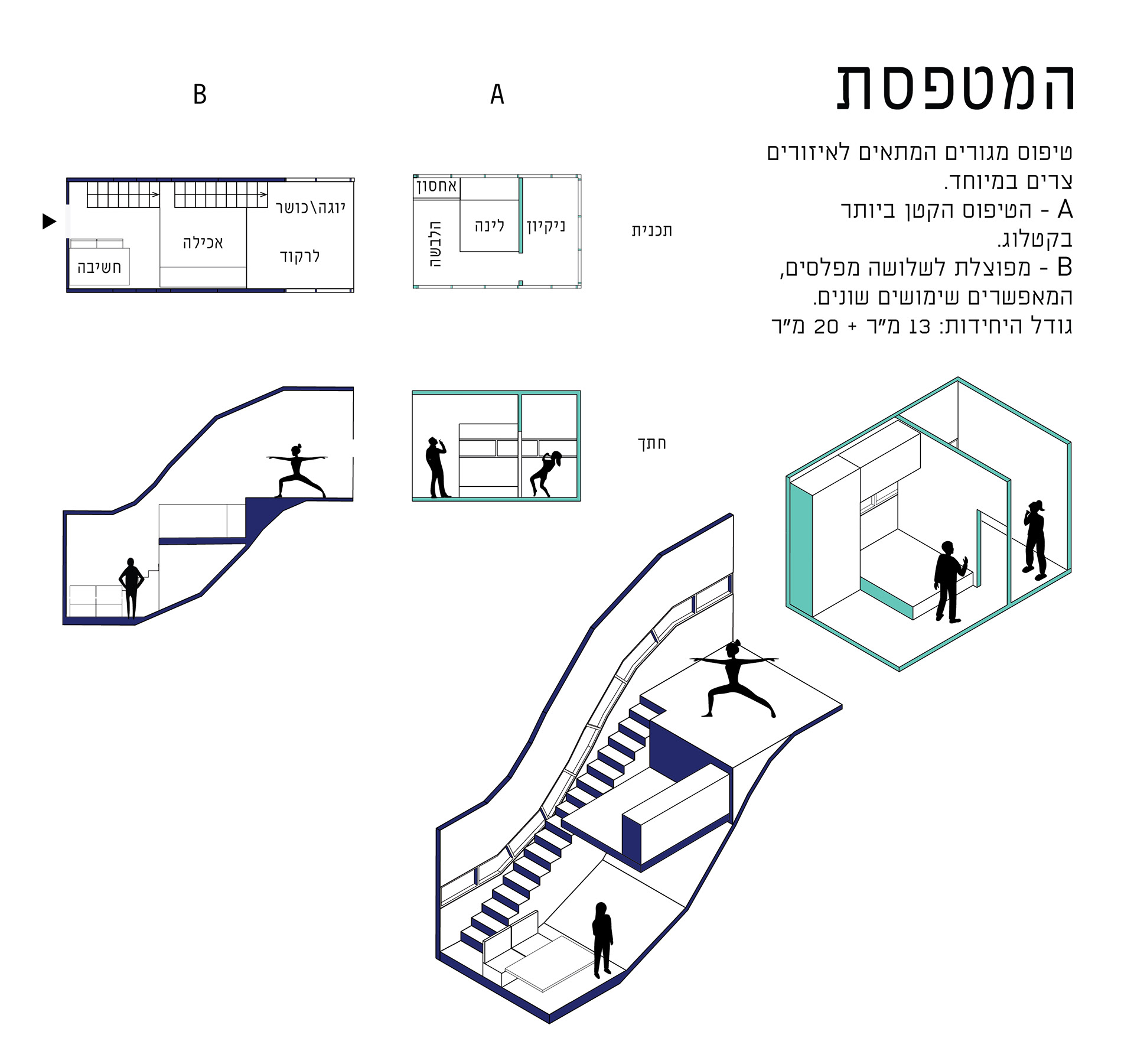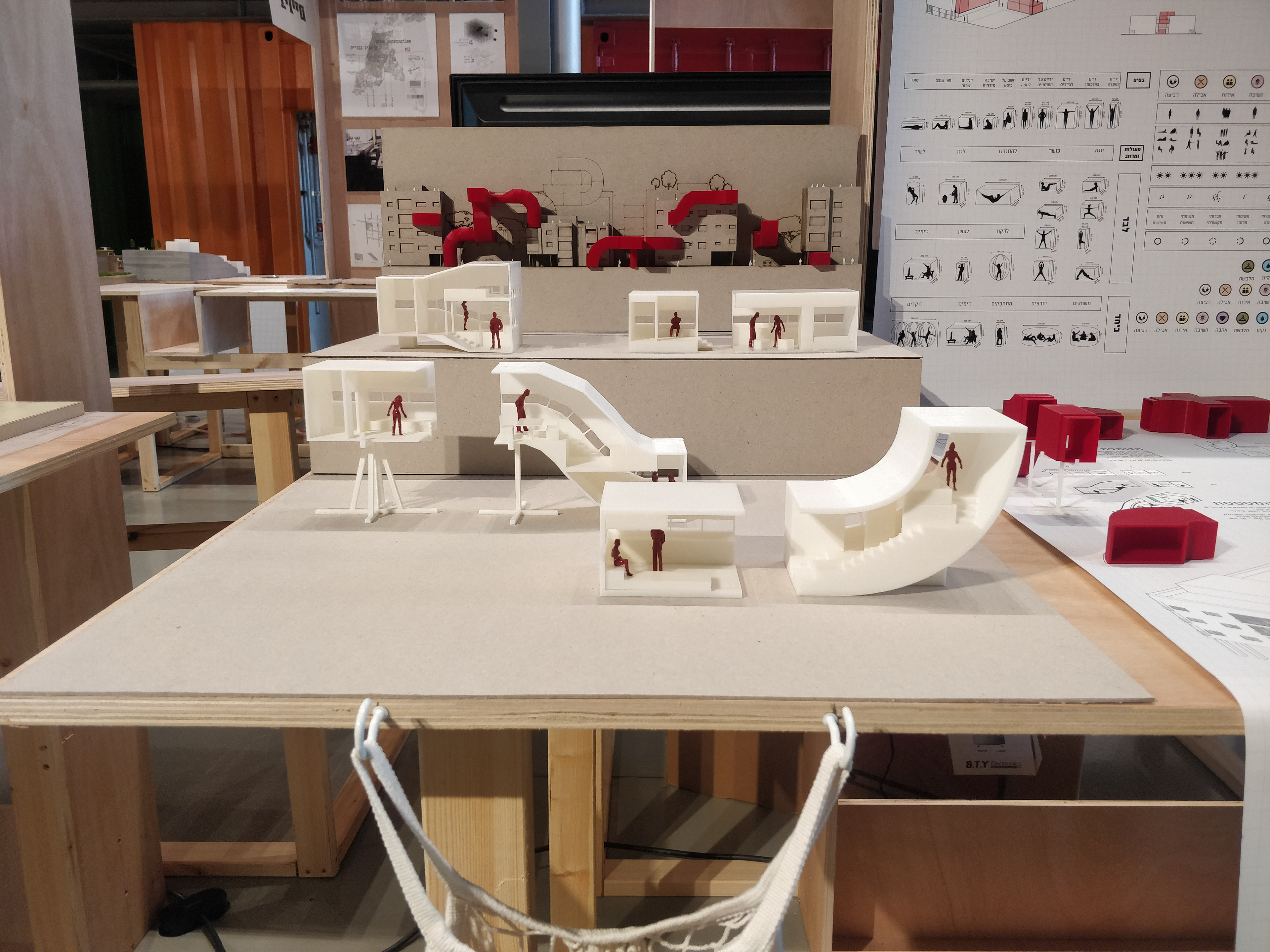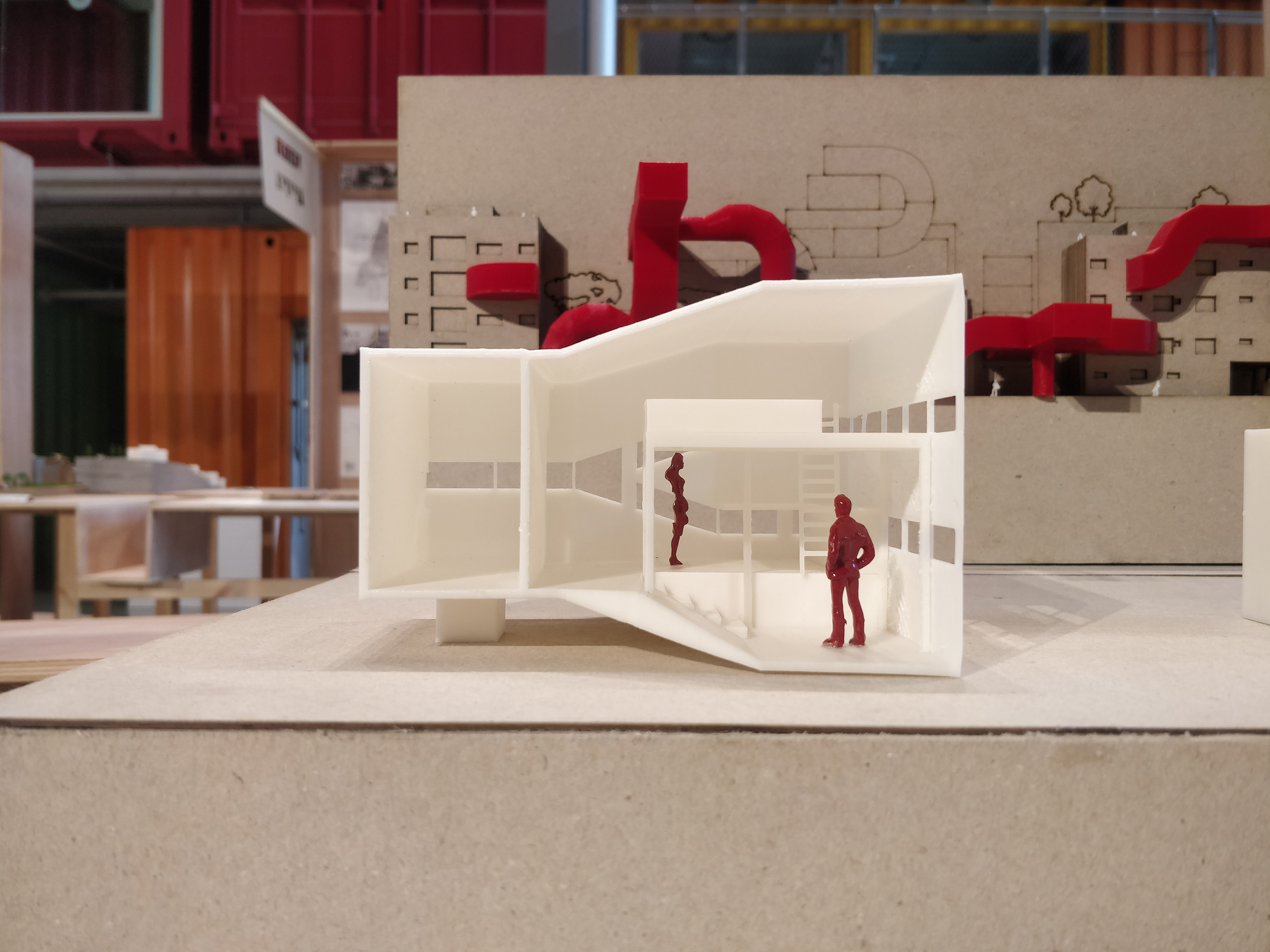פרויקט גמר שנה ה' | מנחה: פרופ' אדר' אילה רונאל
צורות המגורים המקובלות בעידן המודרני נקבעות ממגוון כוחות: כלכליים, תרבותיים ואפילו פוליטיים. מראשית המודרניזם והתיעוש במאה ה-19 ועד היום, תכנון המגורים נעשה על ידי סטנדרטיזציה של הדירה, ושכפולה באופן נרחב, וכך גם שכפול בניינים נהיה חזרתי וגורף. אלא ש"הסטנדרט" יוצר הכללות, מקבץ את הפרטים לקבוצות סטטיסטיות אחידות ו"משטיח" את הפרט שבבסיסם. יתר על כן – בשעה שהסטנדרט חותר לקביעות, לקיבעון, הרי החיים מנוגדים למגמה זו: תרבות ונורמות משתנים עם השנים, הרכב האוכלוסייה דינמי, מסגרות משפחתיות עוברות שינוי, ועימם משתנים גם הצרכים למגורים. בנוסף, מערכות שיווק מתוחכמות מקבעות בתרבותנו את 'חלום הדירה' לפי סטנדרטים אופנתיים של 'הדירה האידאלית' לכאורה, ולה 'חייבים להיות ' 3 כיווני אוויר', 'חדר שינה לכל ילד', 'שירותים לאורחים' 'מרפסת', 'חניה צמודה' ועוד.
פרויקט זה מבקש לעצור ולברר מחדש את נושא המגורים לנוכח המציאות הדינמית לאמור: מה האדם באמת צריך ב"בית", כלומר למגוריו? הפרויקט מציע חשיבה מחדש על יחידת המגורים הגרעינית והשתלבותה בעיר. במרכזו ניצבים פתרונות להוספת דירות קטנות לתוך מרקם אורבני קיים, שכן המחסור בדירות קטנות בישראל הוא החמור ביותר בשוק ואינו זוכה עדיין לפתרונות מספקים על ידי הממסד. אבקש לערער על הסטנדרטיזציה הקיימת ה"מוחקת" את הזהות האינדיווידואלית של הדירה ואת אופי הדרים בה. הפרויקט מציף את רעיון הזמניות שבמגורים ומציג מגורים כמוצר מדף גמיש ארכיטקטונית ורב חלופות תפקודיות
_________________________________________________________________________________________________
5th Year Final Project | Professor: Ayala Ronel
The accepted forms of living in the modern era are determined by a variety of forces: economic, cultural and even political. From the beginning of modernism and the industrialization of the 19th century until today, residential planning is done by standardizing the apartment, duplicating it, and – on a larger scale – erecting buildings in repetitive forms everywhere. This "standard", though, creates generalizations, groups individuals into categorized statistical entities and "flattens" the individual who is the basis for all. Furthermore - while the Standard strives for permanence, for fixation, life is contrary to this trend: culture and living norms alter over the years, the composition of the population is dynamic, family frameworks undergo change and with them residential needs.
In addition, sophisticated marketing systems establish today the 'apartment dream' according to fashionable seemingly ideal standards as 'must have 3 air directions', 'a bedroom for each child', 'guest toilets', 'balcony', 'sheltered parking' and more.
My project seeks to stop and re-examine the subject of residence in the face of the dynamic reality. It asks: what does a person really need in a "home"? The project offers a rethinking of the nuclear residential unit and its integration into the city texture. It focuses on solutions for adding small apartments into an existing urban fabric following the well-spoken-off shortage of such apartments in Israel. I would like to challenge the existing standardization by developing the idea of temporality in residence. I suggest a system for residence as shelf product architecture with multi-functional variations.
חיפוש אחר מרחבים "מתים" בעיר
קונספט - אדריכלות טפילית (parasite architecture)
תעלות איוורור כטפיל במרחב הבנוי
חזרתי לבסיס - לשאלה - מה זה מגורים? מה האדם באמת צריך בסביבת מגוריו? ניתחתי פעולות בסיסיות המגדירות את חיינו
יצרתי מערכת שלמה של קומבינציות אפשריות למגורים, כך שכל אדם יוכל להתאים את מגוריו לצרכיו שלו ולשלב שלו בחיים בשילוב התנאים הסביבתיים ומה שהם מאפשים
ניצול המרחבים הפנויים שבין הבניינים ומעל הכבישים, יצירת מערכת מגורים מקבילה למערכת הקיימת והמוכרת ושילובה בסביבה עם אדפטציה וקונטקסט מקומי
דוגמאות שונות לכמה מן היחידות ואפשרויות השילוב שלהן זו בזו
